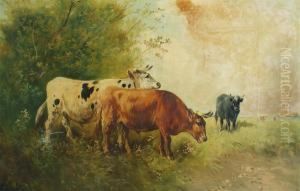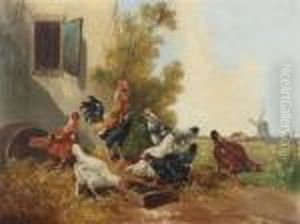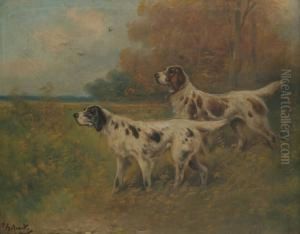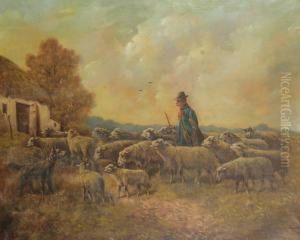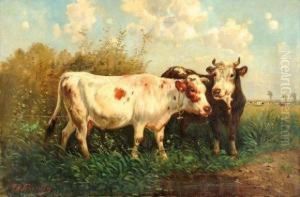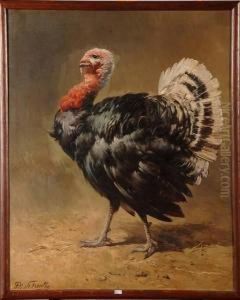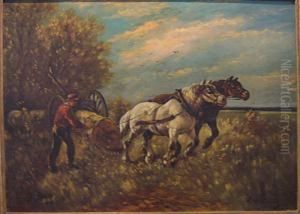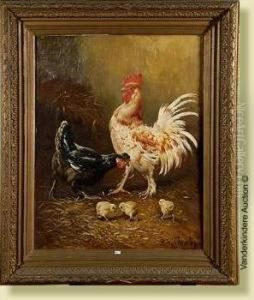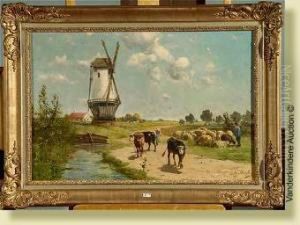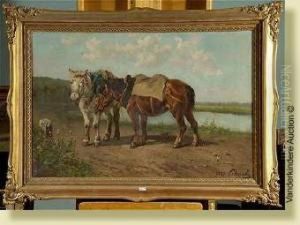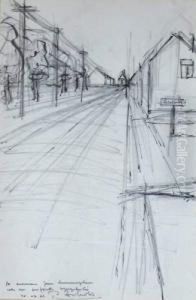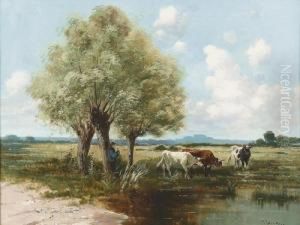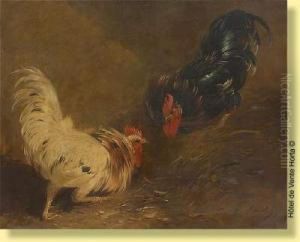Paul Henry Schouten Paintings
Paul Henry Schouten was a Belgian painter known for his animal paintings and rural landscapes. He was born on September 22, 1860, in Antwerp, Belgium. Schouten grew up in a family with artistic roots; his father, Henri Schouten, was also a painter who specialized in similar subjects, which influenced Paul's artistic direction.
During his career, Paul Henry Schouten developed a distinctive style that showcased his love and understanding of animals, particularly farm animals such as cows, sheep, and horses. His paintings often depict these animals in serene, pastoral settings, reflecting the peaceful countryside of Belgium and France. Schouten's work is characterized by a realistic representation of his subjects, with a focus on capturing the textures of fur and the play of light and shadow.
Schouten received his artistic training at the Academy of Fine Arts in Brussels, where he honed his skills under the guidance of renowned artists of the time. He became well-recognized in his native Belgium and abroad, exhibiting his works in various salons and galleries throughout Europe. His paintings were well received by the public and critics alike, and he quickly established himself as a successful and respected artist.
Paul Henry Schouten continued to paint until his death on January 26, 1922. Today, his works can be found in private collections and museums, and they continue to be admired for their beauty and technical skill. Schouten's contribution to the genre of animal painting has cemented his place in the history of European art, particularly within the context of Belgian artistic tradition.










